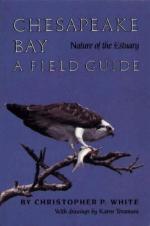|
This section contains 2,092 words (approx. 7 pages at 300 words per page) |

|
Wetlands are areas of land where water covers the surface for at least part of the year and controls the development of soil. Plants and animals that live in wetlands are adapted to living in conditions where the soil is waterlogged. There are many different types of wetlands, but they fall into five general classifications: freshwater marshes, freshwater swamps, salt marshes, mangrove swamps, and bogs (also called fens). In general, swamps have trees, while marshes have plants that have soft stems like grasses, reeds, and sedges (grass-like plants). Bogs are characterized by thick mats of peat, which is made of mosses growing on decayed plants and animals.
Freshwater Marshes
Freshwater marshes are found on the edges of lakes, ponds, and rivers. They are particularly common near the floodplains of rivers. About one-quarter of all the wetlands in the United States are freshwater marshes.
 A sign warns motorists of...
A sign warns motorists of...|
This section contains 2,092 words (approx. 7 pages at 300 words per page) |

|



